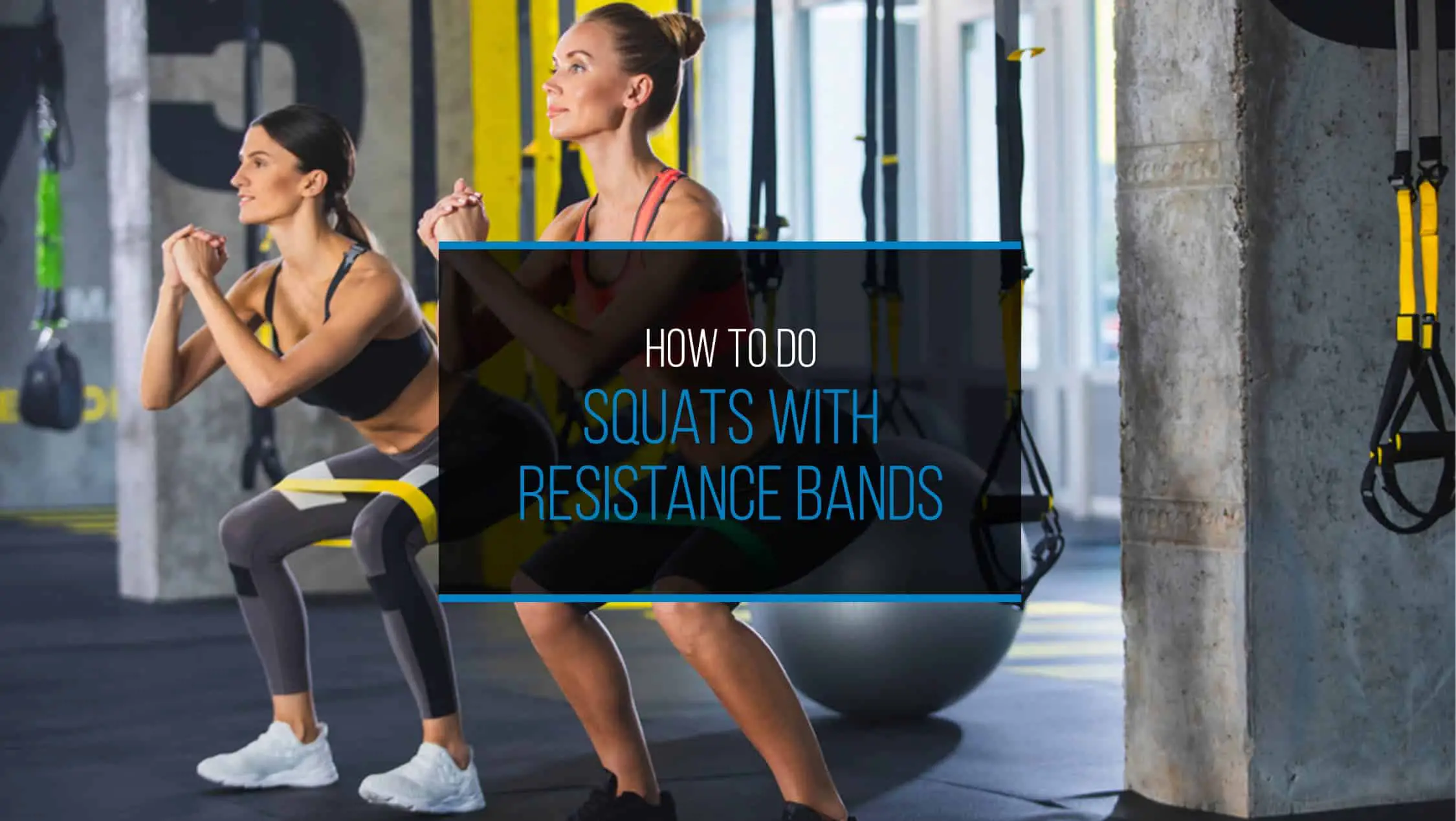Resistance bands are used to add resistance to several different exercises. When using resistance bands to improve your squats, there are a few different ways you do squats while using resistance bands. Resistance band squats are a great way to strengthen your legs and glutes. But how do you do squats with resistance bands?The simplest way to use a resistance band for squats is to stand on the band and hold the resistance band with your hands at shoulder level. Once you are ready, do your usual squat exercise as normal.However, there are quite a few different ways to utilize resistance bands when doing squats. For instance, if you have a flat resistance band, you can step into the resistance band and secure it around your thighs just above your knees before doing your usual squat routine. Using a resistance band like this will strengthen your knees and help you engage your abs more than usual.As you continue to read this article, we will cover the benefits of using resistance bands when doing squats. Furthermore, we will give you a list of eight different squat exercises that you can improve by adding a resistance band.
Benefits Of Using A Resistance Band To Improve Your Squats
Resistance bands are a way of adding artificial weight to your exercises by adding additional resistance with large elastic rubber bands. With that said, there are plenty of reasons why you should add resistance bands to your workouts.
Resistance Bands Adds Variety To Your Strength Training
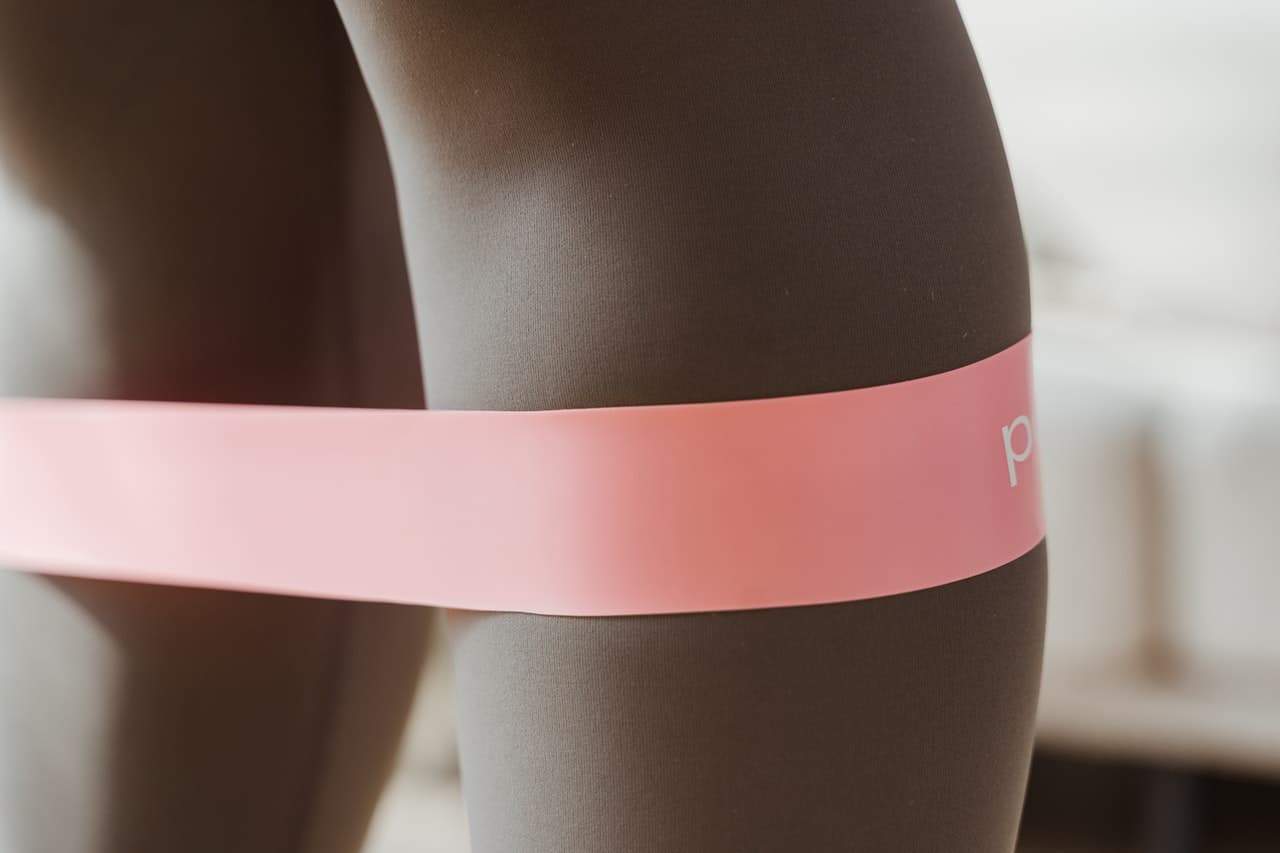
One of the best ways to build lower body strength is by using free weights to do squats. However, while free weights can increase your strength quickly and straightforwardly, free weights are not for everyone. With that said, the people who are not very fond of free weights need to look elsewhere to strengthen their legs. Resistance bands fill that role. Through resistance band squats, you can strengthen your legs in a unique way that also offers increased flexibility. While lifting weights are usually done in a fixed position, resistance bands offer a wide range of motion. Furthermore, you can use resistance bands at all levels of fitness. Resistance bands can help you build proper form, and you can add additional bands to increase the difficulty without using weights.
Resistance Band Squats Strengthen Your Glutes
Squats are the go-to exercise for anyone who wants to strengthen and tone their glutes. Adding a resistance band to your regular squat exercise increases the results that you will see. By using a resistance band in a number of ways, you will find that your glute muscles will be more engaged when doing squats. You can also use resistance bands when doing leg lunges.
Resistance Band Squats Strengthens Your Legs

Squats are an exercise that focuses on strengthening your lower body. Squats target your glutes, hamstrings, quads, and your calves. By adding a resistance band to your squats, your leg muscles will get more strength training. You can use a resistance band in a number of ways to increase your leg strength through squats, lunges, split squats, and lateral leg lifts.
Using A Resistance Band Burns More Calories When You Do Squats
Because you are adding extra resistance to any exercise, you will be burning more calories. Depending on your weight and how hard you are working out, the average person can burn around 80 calories every 10 minutes of doing squats. By adding a resistance band to your squat workout, you can nearly double the number of calories you are burning. Adding a resistance band to your squat routine increases the number of calories you are burning by 50 to 100 calories every 10 minutes.
How To Do Resistance Band Squats
There are a few different types of resistance bands. However, only two are helpful for adding resistance to your squats. If you are looking to use resistance bands in your squats, we recommend using loop bands or tube bands. Loop bands are the best resistance bands for squats because you can use them in more ways than tube bands. With that said, we recommend purchasing a loop or power resistance band when looking to improve your squats. Below we will give you a list of eight different ways you can use resistance bands to increase the difficulty of your squats.
Anchored Hinges
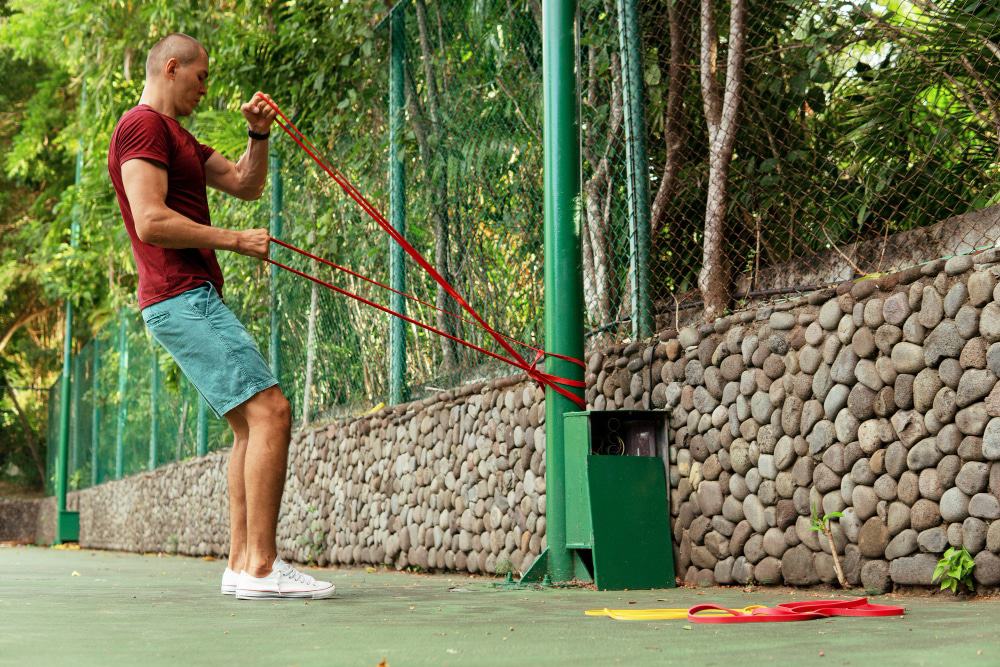
Anchored hinges are a fantastic way to help you learn the proper squat form. Learning and mastering the proper squat form will help prevent knee and back injuries. Anchored hinges can be done with both loop and tube resistance bands.
- Secure your resistance band to a sturdy anchor point like a weighted gym bench, closet doorknob, or pole.
- Step into the resistance band and bring the band up to your hips
- Walk forward until the band has a good amount of tension. Three to five feet away from the anchor will provide plenty of tension.
- Slowly bend your hips as if you were starting a squat. However, only slightly bend your knees. The resistance band will pull your hips back as you bend, showing you how to position your upper body as you squat.
The Classic Resistance Band Squat
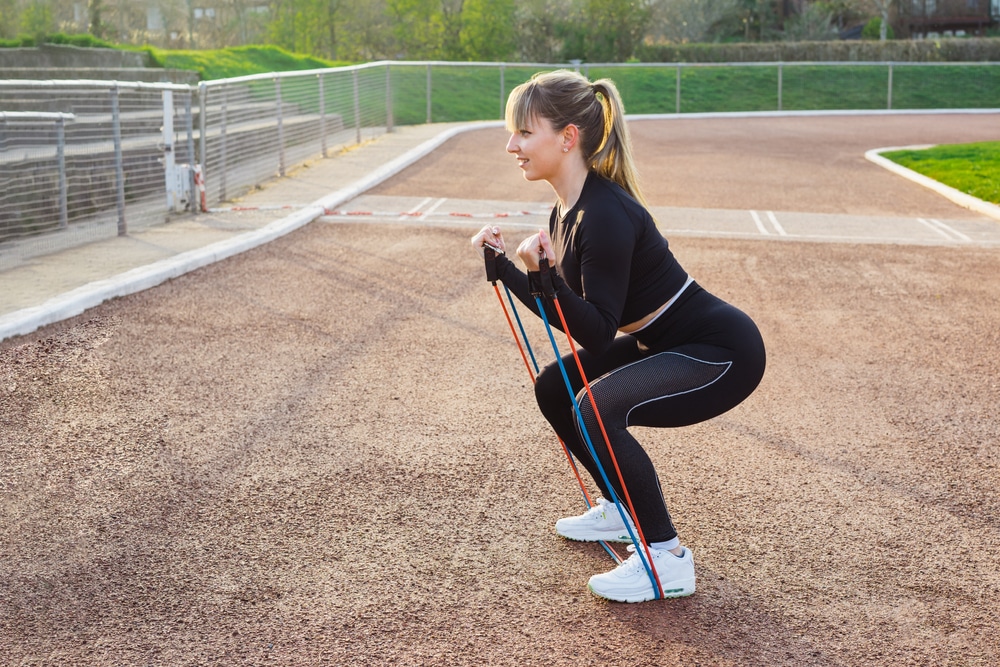
You can perform this squat with either a loop resistance band or a tube resistance band. This is the basic squat, and by using a resistance band, these squats will help engage your glutes and quads.
- Stand up straight with your feet shoulder-width apart.
- Keep your feet flat on the floor and turn them outward at a slight angle. This will help with balance.
- Place either a loop resistance band or a tube resistance band under your heels and pull the other end of the resistance band up to your shoulders.
- Raise the resistance band two to three inches above your shoulders and hold it there throughout your squat exercise.
- Proceed with squat exercise as usual by bending your knees and your hips simultaneously until your thighs form a 90-degree angle with the floor. Keep your back straight, head up and chest out. Your head should be directly above your thighs when you are in the squat position.
- Slowly stand back up to the starting position to finish the squat.
Resistance Band Squats And Full Arm Extensions
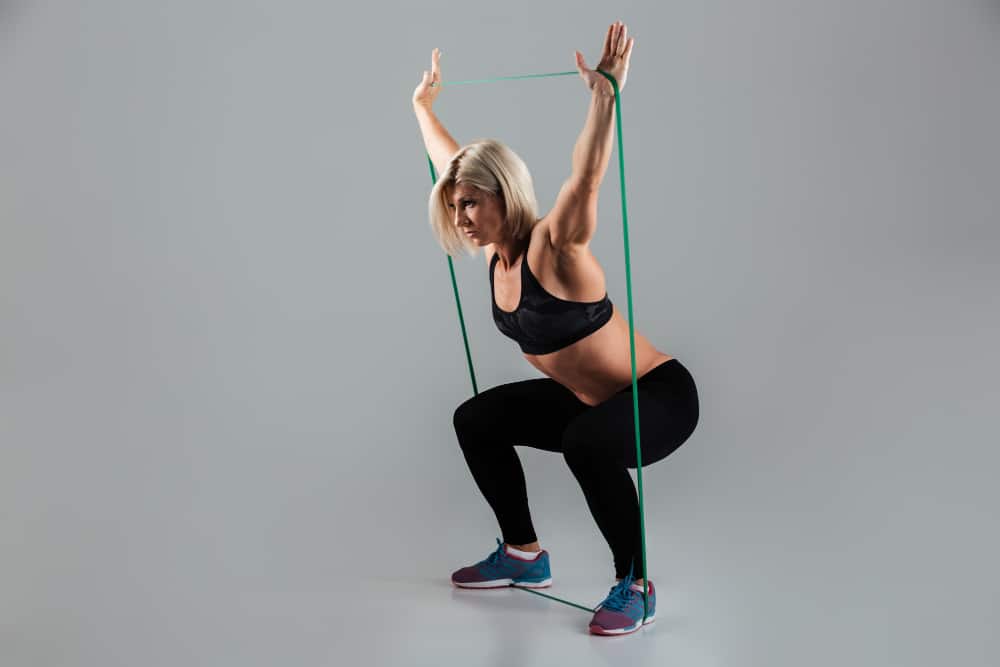
This squat improves on the classic squat by incorporating an arm and shoulder workout and improving your abs and leg muscles. Like the classic squat, you can use this version with both the loop and tube resistance band.
- Get into the starting position by keeping your feet shoulder-width apart while standing on the resistance band and keeping it under your heels.
- Pull your resistance band up to your shoulders, keeping the band behind you. The palms of your hands will be facing up while holding the resistance band at neck level.
- Slowly lower yourself into the squat position until your thighs are parallel with the floor. However, raise your arms up above your head as you lower into the squat position.
- Slowly return to the starting position while keeping your arms and the resistance band above your head.
- Return your arms and the resistance band to neck level and repeat.
Resistance Band Squats With A Loop Band
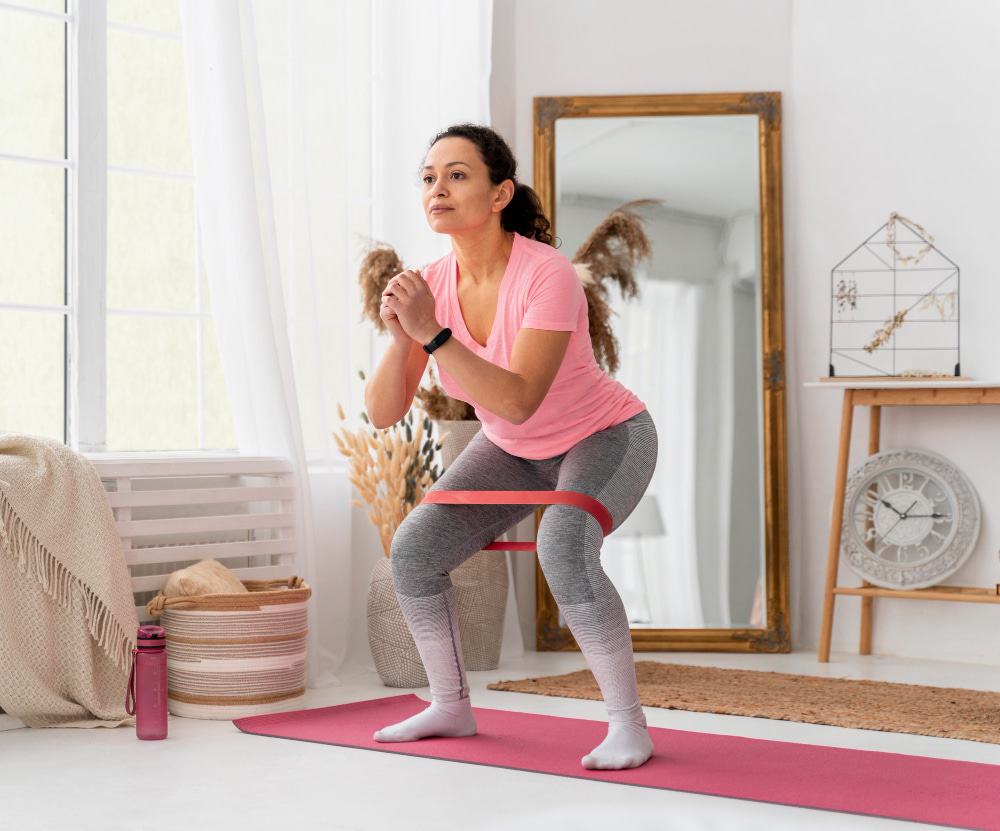
This squat can only be done with a loop band because the band goes around your legs just above the knees. This squat will strengthen your knees while also engaging your glutes.
- Step into the loop band and pull it up to your thighs just above your knees.
- Spread your feet apart to shoulder width, which will add tension to the resistance band.
- Proceed with the squat as usual and slowly lower yourself into the squat position. Try to keep the tension on the resistance band as you bend your knees until your thighs are parallel to the floor.
- Slowly return to the starting position while pushing your knees against the resistance band to keep tension.
Resistance Band Squats And Lateral Leg Lifts
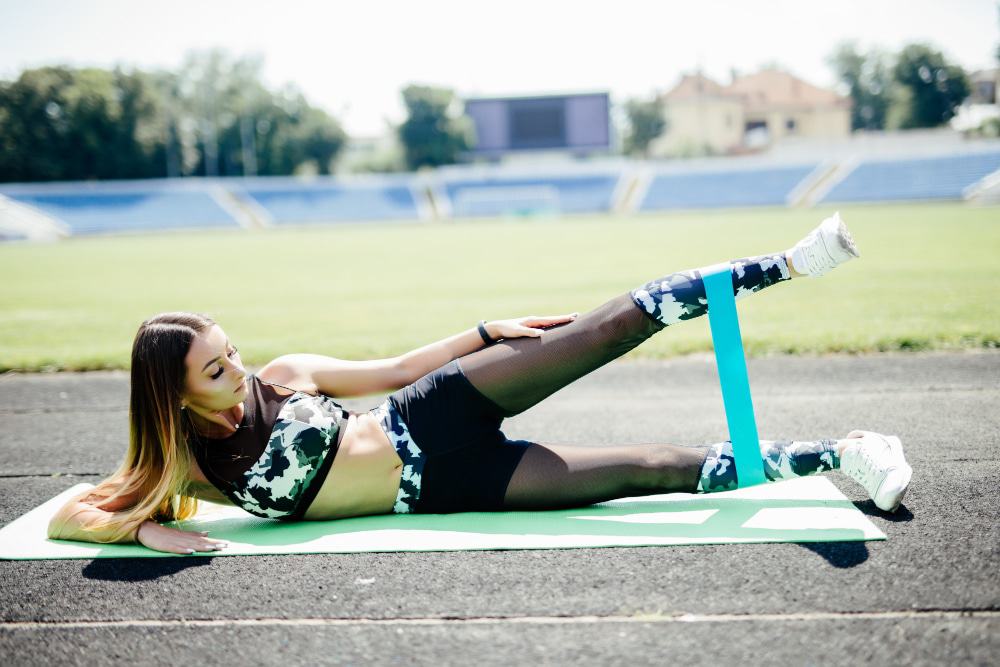
You can add lateral leg lifts to the previous squat we talked about to help strengthen your hamstrings and hips as well as your quads and glutes. This squat can only be done with a loop resistance band.
- Get into the starting position with your feet shoulder-width apart and your loop resistance band on your thighs just above your knees.
- Lower yourself to the ground until your thighs are parallel with the floor. Remember to push against the tension with your knees.
- Slowly return to the starting position while also lifting your left leg out to your side until your knees are straight.
- Bring your left leg back down and return to the starting position. Remember to keep tension on the band with your knees.
- Repeat the squat, instead lift your right leg.
Resistance Band Butterfly Squats
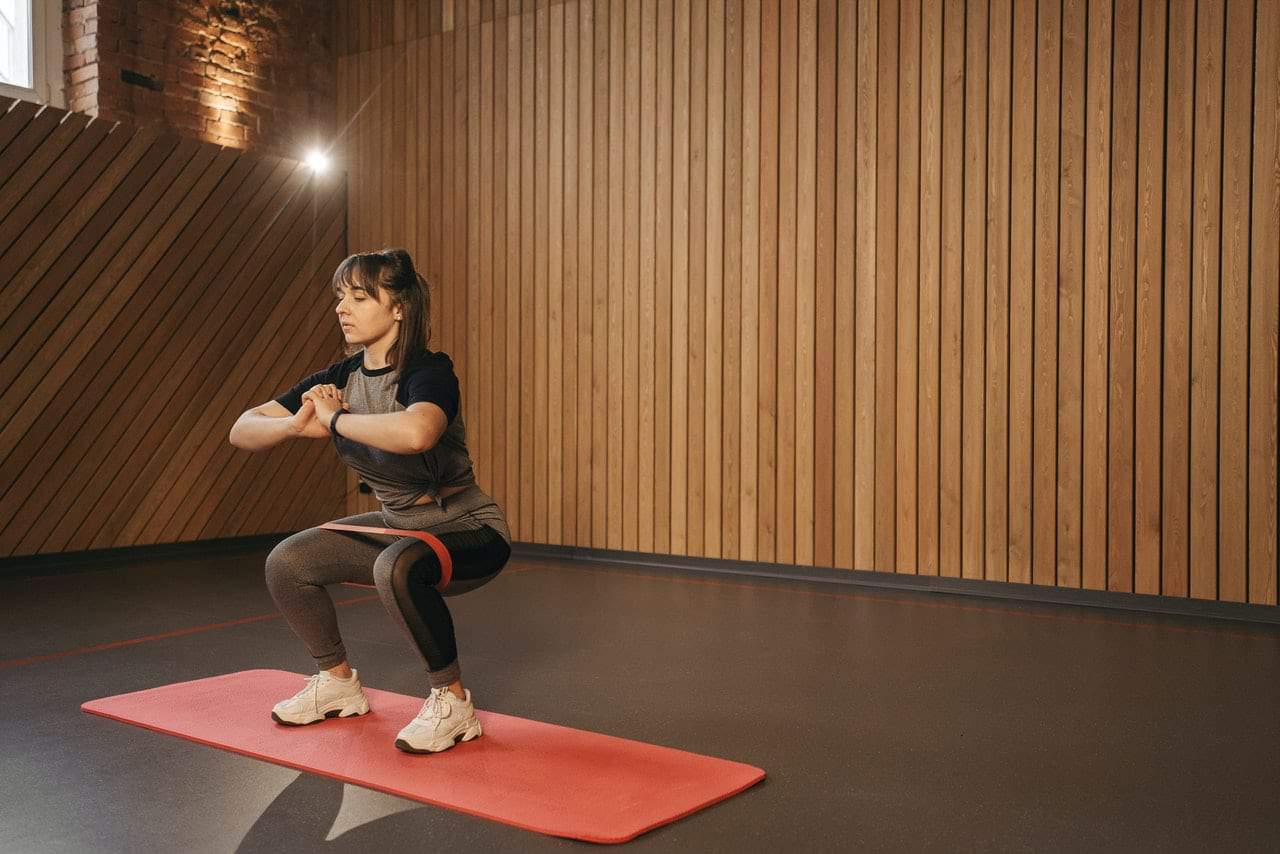
This squat requires the use of a loop resistance band and focuses on your calves and your glutes. Banded butterfly squats also help stretch and strengthen your thighs and hips.
- Get into the starting position by stepping into your loop resistance band and bringing it up to your thighs just above the knees.
- Stand up straight with your feet shoulder-width apart, facing slightly outward.
- Slowly lower yourself into the squat until your thighs are parallel with the floor.
- As you are hitting the bottom of the squat, lift your heels off the ground and balance yourself on the balls of your feet. As you balance on the balls of your feet, spread your knees further apart.
- In one smooth motion, bring your knees back to shoulder-width apart with your knees facing forward and lower your heels back to the floor. Try to keep the tension of your resistance band as you bring your knees back into position.
- Slowly stand back up into the starting position.
Banded Split Squats

Banded split squats can be done with either a loop or a tube resistance band. Split squats help strengthen your entire leg. Adding a resistance band to this squat will increase the strength your legs gain while also helping you tone your shoulders.
- Stand on the resistance band with your left foot, keeping the band under your heel.
- Pull the opposite end of the resistance band up to shoulder height with both hands while raising your elbows, so they are parallel with the floor.
- Extend your right foot behind you with your toes touching the floor.
- Lower your body into the squat until your right knee almost touches the floor, and your left thigh runs parallel with the floor.
- Keep your chest and back straight up and your shoulder back. Keep your head and neck in line with your back.
- Return to the starting position and repeat as many times as you want before repeating the exact number but with your right foot standing on the band instead.
Final Thoughts
Resistance bands are an excellent way to improve on simple exercises without lifting weights. With that said, squats are a great way to strengthen your legs, glutes, and abdominal muscles. Therefore, adding resistance bands to your squat routine will improve your strength training routine. With that said, we hope that our guide to the eight different ways to do resistance band squats has inspired you to try using resistance bands when doing squats.

